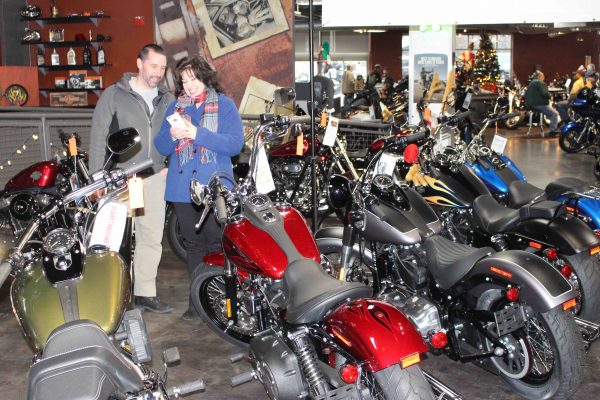LITTLE NECK, NY – How well a sales person handles a showroom visitor can make all the difference between an excited new bike owner and a disgruntled shopper leaving a dealership in a huff. A well-trained, skillful sales person understands how important it is to  follow an organized sales process that is guided by two equally important principles:
follow an organized sales process that is guided by two equally important principles:
– Treat the customer with respect and show a genuine interest in understanding their needs.
– Eliminate all obstacles in the way of the customer buying a bike.
The first principle is mainly embodied in the attitude that the sales person brings to their job. If they’re only going to focus on pressuring customers to buy, then the single-minded sales person is most likely going to lose more sales than he gets.
Eliminating obstacles in the way of a customer saying “yes” is best achieved by the sales person learning and implementing a specific, multi-step approach to selling. Formal sales training has long embraced the idea of an organized sales process that moves through a series of very specific actions to achieve the final goal of a sale. I’ve seen 10-step, five-step, seven-step and other iterations of these programs.
Regardless of how many steps are involved, the goal is always the same: guide the customer through a series of actions that, when properly executed, eliminate all obstacles to the sale and put the customer on the best possible bike for him or her. Perhaps the most widely adopted system is based on the seven-step process. It goes something like this:
Step 1 – Meet and greet the customer promptly. Make a proper introduction and briefly get a sense of why the customer is there.
Step 2 – Interview the customer to get the best possible idea of what they might be interested in. This includes learning about their riding habits, experience and budget.
Step 3 – Have the customer sit on a bike that best fits their needs. This is a key step in helping the customer finalize his choice.
Step 4 – Make a detailed presentation of the features and specifications while the customer is sitting on the bike. Offer a demo ride if allowed.
Step 5 – Sit down to discuss the details about buying the bike. Finalize the specific model, color, options, etc. Determine availability (in stock or not).
Step 6 – Write up the deal. Here the sales person commits everything discussed to paper. This will include all of the financial details, as well – selling price, payments, etc.
Step 7 – Finalize, or close, the sale. Shake hands on the deal. Customer visits the finance office to finalize all paperwork. Arrangements are made for bike pick up.
 A sales person using an organized sales process will be able to move through the entire series of steps while developing a positive relationship with the customer. At no time should the customer feel that they are being pressured or manipulated into making a decision.
A sales person using an organized sales process will be able to move through the entire series of steps while developing a positive relationship with the customer. At no time should the customer feel that they are being pressured or manipulated into making a decision.
If everything works as it should, the customer will come away with some very positive impressions, including that he or she was:
– Treated professionally with respect and consideration for their needs.
– Given the opportunity to learn about and evaluate choices.
– Given the time needed to consider options.
– Thoroughly educated about the bikes.
– Never made to feel pushed into making a hasty decision.
– Thoroughly informed of all financial aspects of the purchase; and that everything was disclosed and clearly explained.
The end result is a customer who:
– Comes away from the transaction trusting the sales person and dealership.
– Feels confident that a good decision was made and that he or she was treated fairly.
– Looks forward to doing future business with the dealership – service, parts, etc.
So, the next time you visit a dealership to consider purchasing a bike, keep in mind that you may encounter a well-trained sales person. You might get the sense that the sales person is following an organized sales process like the one outlined above.
As long as the sales person is honoring the intent of this process, you will actually benefit. Allowing the sales person to guide you through the various phases will provide you with the most possible information about your potential purchase. You’ll be well armed to make the best decision about your next bike.
Or you can short circuit the whole process and tell the sales person “I’m just looking.”
Note: Bob Rosen has been writing recently about the “small things” that can make a dealership successful and satisfy customers. Previous topics include the proper use of the telephone and showroom etiquette.
 Ride CT & Ride New England Serving New England, NYC and The Hudson Valley!
Ride CT & Ride New England Serving New England, NYC and The Hudson Valley!



